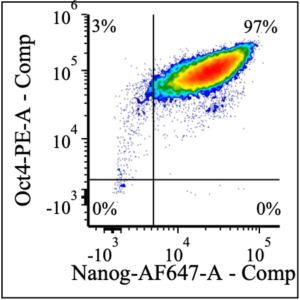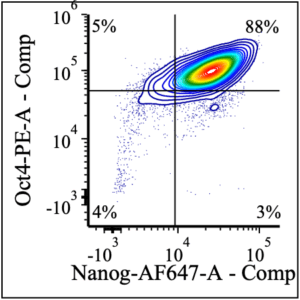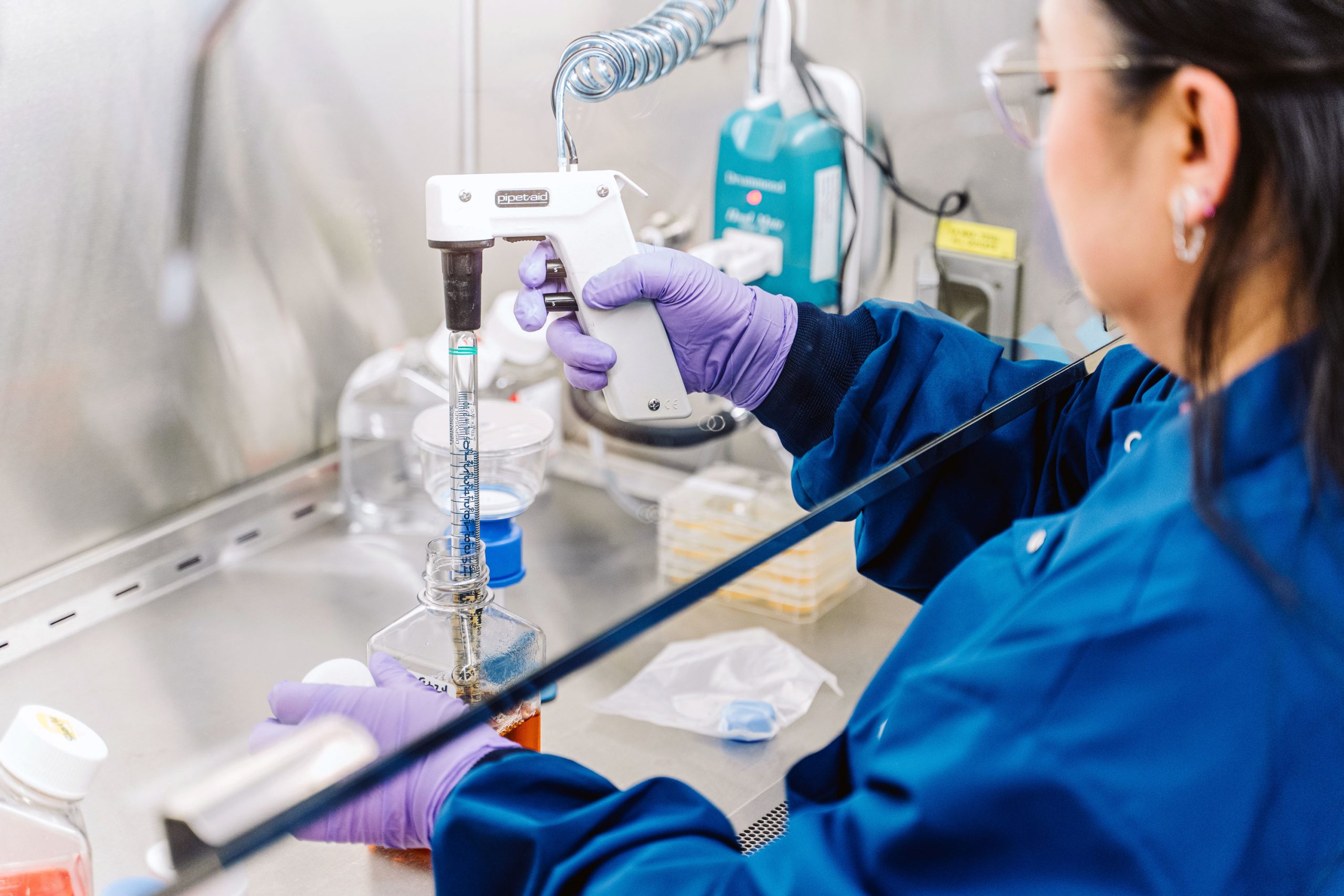What is the Undifferentiated Status?
A defining characteristic of stem cells is their ability to self-renew while remaining in an undifferentiated state. In this state, the stem cells have not yet committed to a specific lineage or cell type. The intracellular transcription factors Oct4 and Nanog are among the most reliable and specific markers for assessing the undifferentiated status of stem cell lines1.
Regular assessment of stem cell cultures is essential to monitor changes in morphology, karyotype, and differentiation potential. Over time, as cells adapt to their culture conditions, the composition of the population can shift due to selective pressures on the cells. This makes routine monitoring of key quality attributes essential for maintaining culture purity, ensuring research reproducibility, meeting regulatory standards, and validating outcomes in both research and therapeutic contexts.
With 25 years of stem cell expertise, WiCell can reliably execute characterization assays to confirm the undifferentiated status of your cell lines and ensure the integrity of your research.
WiCell’s Undifferentiated Status Assessment by Flow Cytometry Assay
WiCell utilizes the BD Biosciences Accuri™ C6 Plus Flow Cytometer to confirm the undifferentiated and self-renewal status of stem cell lines by measuring the expression of Oct4 and Nanog. The concurrent—or dual—expression of these markers serves as a clear indicator of the undifferentiated state. This assessment method provides a quantitative assessment of population heterogeneity by determining the percentage of undifferentiated cells in the initial cell line.
Data analysis is performed using FCS Express™ from De Novo Software. First, non-viable cells are excluded using the LIVE/DEAD™ Green Dead Cell Stain Kit (Invitrogen™). Data files undergo a gating process that first filters for cells (excluding debris), followed by singlets, and then live cells. Compensation matrices are computationally generated from single-color controls and applied to all sample data files. All data for samples and compensation controls are acquired on the same day on the same instrument to ensure consistency.
Subsequent gating for Oct4 and Nanog expression is performed in two ways to determine (1) the percent dual expression, and (2) the percent dual high expression of the sample cell line:
Dual Expression
The percentage of cells expressing both Oct4 and Nanog is determined. Dual expression is gated using Fluorescence Minus One (FMO) controls, where either Oct4 or Nanog antibodies are omitted.

Dual High Expression
The percentage of dual high expression of Oct4 and Nanog is determined. Dual high expression is gated using a contour plot to define the population of cells with high levels of both Oct4 and Nanog expression.

Please see our sample Undifferentiated Status Gating Scheme for a more detailed explanation.
Submitting Samples
Samples for flow cytometric analysis are accepted as cryopreserved cells or live cultures. Live cultures are accepted all day every weekday, except Friday after 9:30am. Detailed sample submission instructions are available. Please email [email protected] for pricing and additional sample submission information.
Safeguard Your Stem Cell Research
WiCell is committed to delivering accurate and reliable characterization services that safeguards your stem cell research. After assay completion, the results for your cell line will be provided in an Assessment of Undifferentiated Status Report (sample report).
Additionally, WiCell provides flow cytometry testing services to assess pluripotency following in vitro trilineage differentiation to ensure thorough characterization of your stem cell lines.
Contact us for inquiries about assay customization, live culture sample submission, or any other questions.
REFERENCES
- Ludwig TE, Andrews PW, Barbaric I, et al. ISSCR standards for the use of human stem cells in basic research. Stem Cell Reports. 2023;18(9):1744-1752. doi:10.1016/j.stemcr.2023.08.003
